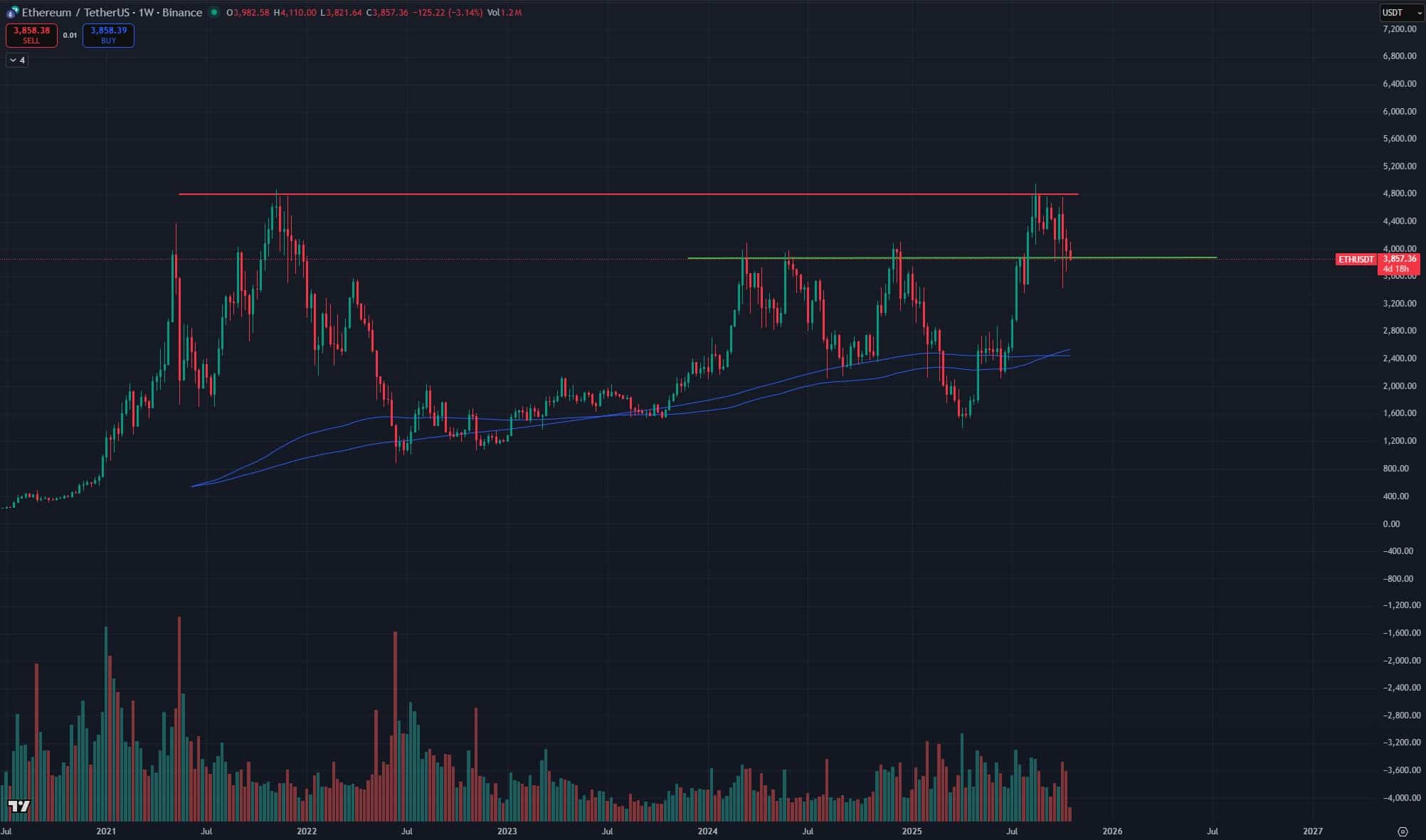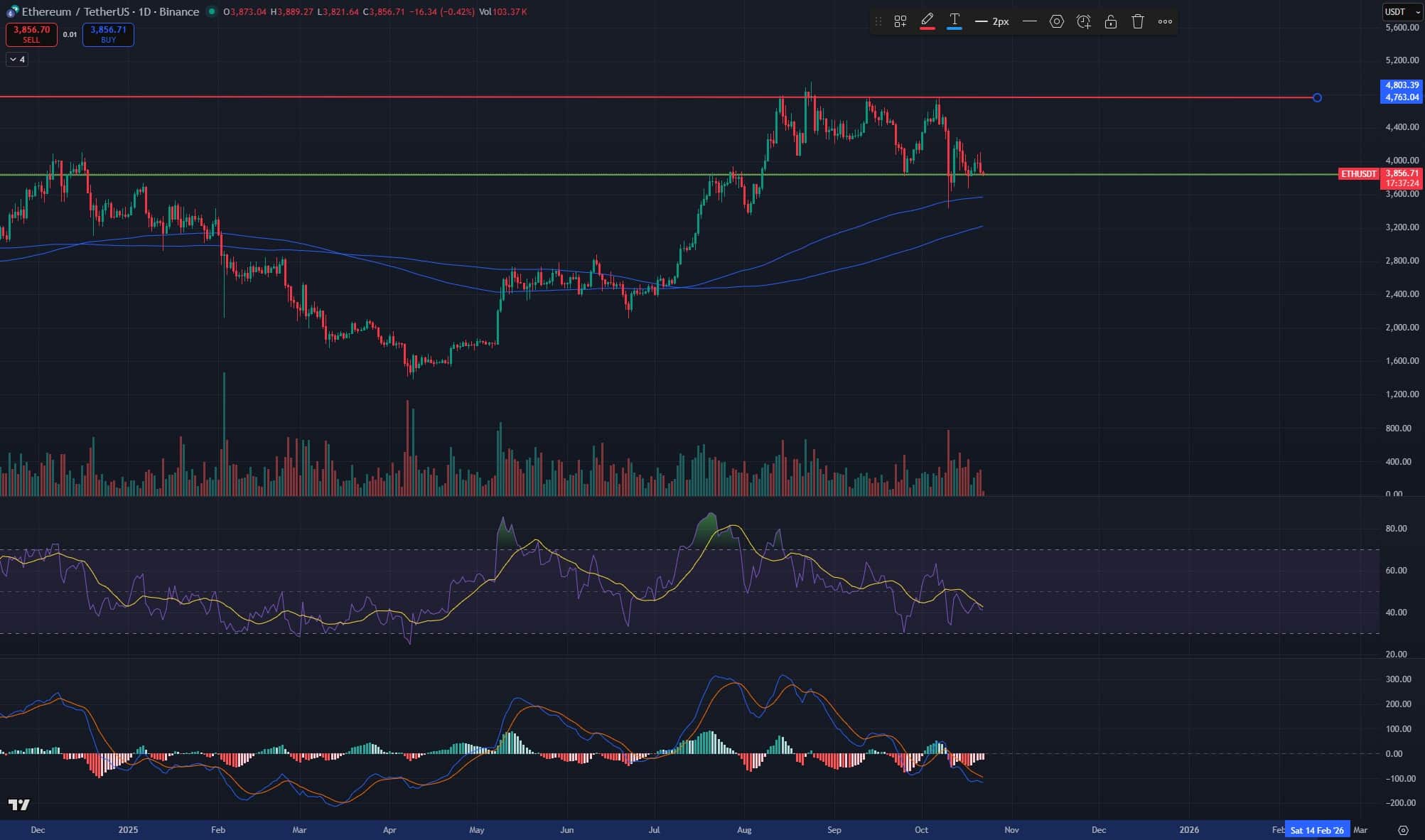The Ethereum testnet phase for the upcoming Fusaka upgrade is now in full swing, signalling a significant moment for the Ethereum network and its effect on the ETH price. With the Ethereum network gearing up for Fusaka, traders and developers alike are watching closely.
Will the upgrade boost throughput, lower fees, and anchor a renewed altcoin surge? Here’s everything you need to know about what’s coming, why the final testing matters, and how the Ethereum price could respond.
Market Cap
The Fusaka upgrade is the next major hard fork for Ethereum, following the Pectra upgrade earlier in 2025. It is designed to improve scalability, efficiency, and security on the Ethereum network by optimising how blocks and transactions are processed.
UPDATE: Ethereum's Fusaka upgrade enters final testnet phase ahead of Dec. 3 mainnet rollout.
The upgrade introduces a gas cap per transaction to improve block efficiency and prepare the network for parallel execution.
— Cointelegraph (@Cointelegraph)
Key features include EIP-7825, which imposes a per-transaction gas cap of about 16.78M units, and other enhancements such as “PeerDAS” (Peer Data Availability Sampling). The upgrade raises the block gas limit to ~60M units, allowing more transactions per block and better supporting Layer-2 2 systems. The timeline currently targets a mainnet rollout in December 2025, after a multi-stage testing program.
Fusaka’s success is expected to unlock greater throughput and possibly drive cheaper, faster transactions, key for DeFi, dApps and altcoins built atop Ethereum.
DISCOVER:
Ethereum is now entering its final testnet phase for Fusaka, marking the last significant step before the mainnet launch. The Sepolia testnet activation has already begun, testing higher gas limits and the new data-availability mechanisms. On the Holesky and Sepolia networks, the new gas cap rules are live, preventing single transactions from consuming entire blocks and thus increasing reliability and security. The final public testnet launch on Hoodi is scheduled for October 28, ahead of the mainnet on December 3.
The Ethereum testnet, Sepolia, has been successfully upgraded to Fusaka!
Next up is the Hoodi testnet which is the final testnet being upgraded.
If all goes well with Hoodi, Fusaka should land on mainnet in early December.
— sassal.eth/acc
(@sassal0x)
For the ETH price and wider crypto altcoin market, this testing phase is meaningful because the successful rollout of Fusaka can restore confidence in the Ethereum network’s scaling roadmap. Lower fees and higher throughput may drive renewed demand for ETH, especially if DeFi volumes and roll-up activity accelerate.
DISCOVER:
After a fantastic run this year, the price managed to hit a new ATH at $4950 and is now retracing back to $3860 level. That marks a double top pattern, which can lead to significant profit-taking and cause the ETH price to seek support later on. On a weekly time frame, this support is around $3850 level, where the price has previously tried to break out three times. This makes a perfect spot to bet that the ETH price will go up, given the positive fundamentals and technicals.

(Source – )
On a daily time frame $3850 support coincides with the 200 EMA and SMA supporting band, which further strengthens the chance of the ETH price to bounce from here. If that happens, the price will form a channel, staying at the bottom of it. The RSI indicator is staying at 42, which is on the verge of oversold levels. MACD is showing potential for a reversal as it goes to the positive levels.

(Source – )
If Fusaka delivers as expected, ETH could enjoy a function-driven rally rather than just speculation, a favourable scenario for altcoins built on Ethereum, especially as network efficiency improves.
DISCOVER:
The post appeared first on .